
Jedda, released in the UK as Jedda the Uncivilised, is a 1955 Australian film written, produced and directed by Charles Chauvel. His last film, it is notable for being the first to star two Aboriginal actors, Robert Tudawali and Ngarla Kunoth in the leading roles. It was also the first Australian feature film to be shot in colour.

Robert Tudawali, also known as Bobby or Bob Wilson, was an Australian actor and Indigenous activist. He is known for his leading role in the 1955 Australian film Jedda, a role for which he was specifically chosen by the film's director, Charles Chauvel and his wife Elsa, and which made him the first Indigenous Australian film star, Tudawali served as vice-president of the Northern Territory Council for Aboriginal Rights.
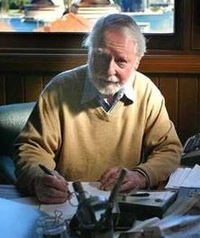
Jon Stephen Cleary was an Australian writer and novelist. He wrote numerous books, including The Sundowners (1951), a portrait of a rural family in the 1920s as they move from one job to the next, and The High Commissioner (1966), the first of a long series of popular detective stories featuring Sydney Police Inspector Scobie Malone. A number of Cleary's works have been the subject of film and television adaptations.
Jandamarra or Tjandamurra, known to British settlers as Pigeon, was an Aboriginal Australian man of the Bunuba people who led one of many organised armed insurrections against the British colonisation of Australia. Initially employed as a tracker for the police, he became a fugitive when he was forced to capture his own people. He led a three-year campaign against police and British settlers, achieving legendary status for his hit and run tactics and his abilities to hide and disappear. Jandamarra was eventually killed by another tracker at Tunnel Creek on 1 April 1897. His body was buried by his family at the Napier Range, where it was placed inside a boab tree. Jandamarra's life has been the subject of two novels, Ion Idriess's Outlaws of the Leopold (1952) and Mudrooroo's Long Live Sandawarra (1972), a non-fiction account based on oral tradition, Jandamurra and the Bunuba Resistance, and a stage play.
Paddy Nyunkuny Bedford, aka Goowoomji, was a contemporary Aboriginal Australian painter and printmaker from Warmun in the Kimberley in Western Australia. He was one of eight Australian artists selected for an architectural commission for the roof and ceilings of the Musée du quai Branly in Paris, France.

The Sundowners is a 1952 novel by Australian writer Jon Cleary.

Fossil Downs Station is a pastoral lease and cattle station located about 50 kilometres (31 mi) north east of Fitzroy Crossing in the Kimberley region of Western Australia.
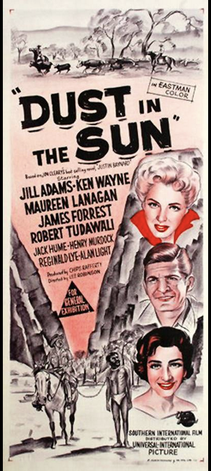
Dust in the Sun is a 1958 Eastmancolor Australian mystery film adapted from the 1955 novel Justin Bayard by Jon Cleary and produced by the team of Lee Robinson and Chips Rafferty. The film stars British actress Jill Adams, Ken Wayne and an Indigenous Australian actor Robert Tudawali as Emu Foot.

You Can't See 'Round Corners is a 1947 novel by Australian author Jon Cleary. It was his first published novel.
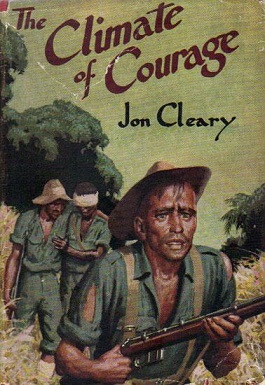
The Climate of Courage is a 1954 novel by Australian writer Jon Cleary. It was his fifth published novel. It is set during World War II and involves a group of Australian soldiers who have returned from service in the Middle East.

The Long Shadow is a 1949 novel from Australian author Jon Cleary.
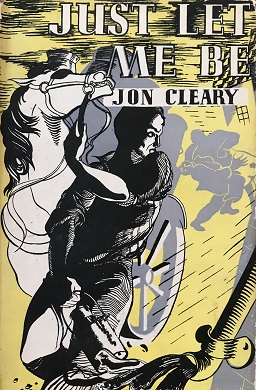
Just Let Me Be is a 1950 novel from Australian author Jon Cleary. It was his third published full-length novel.

The High Commissioner is a 1966 detective novel by Australian author Jon Cleary which introduced the detective hero Scobie Malone.
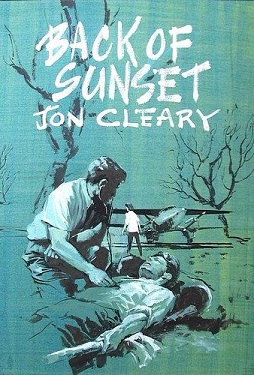
Back of Sunset is a 1959 Australian novel from Jon Cleary.

North from Thursday is a 1960 novel from Australian author Jon Cleary. It is set in New Guinea and concerns the eruption of a volcano, forcing a group of survivors to flee across the country. The story is based on the 1951 eruption of Mount Lamington.

Ransom was a 1973 novel by Australian author Jon Cleary, the third to feature his detective hero Scobie Malone. Cleary also wrote The Sundowners and The High Commissioner. The novel was published by Fontana Press on November 3, 1975.

Madman's Island is a 1927 novel by Ion Idriess set in northern Australia.
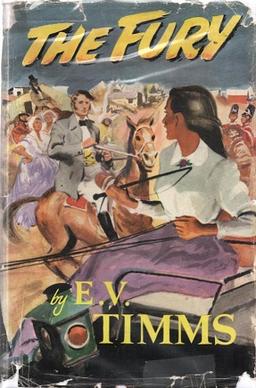
The Fury is a 1954 Australian novel by E. V. Timms. It was the seventh in his Great South Land Saga of novels.

Moola Bulla Station is a pastoral lease that operates as a cattle station in the Kimberley region of Western Australia. It is approximately 20 kilometres (12 mi) west of Halls Creek and 150 kilometres (93 mi) south of Warmun, and occupies an area of 6,600 square kilometres (2,548 sq mi). It bisects the watershed of the Fitzroy River and Ord Rivers.

Gallows on the Sand is a 1956 novel by Morris West. It was the first novel he published under his own name. He later claimed it was written in seven days for $250 in order to pay a tax bill after he had had a nervous breakdown. West credited the book as launching his career as a novelist. However a later review of the author's career dismissed it as a "potboiler".


















